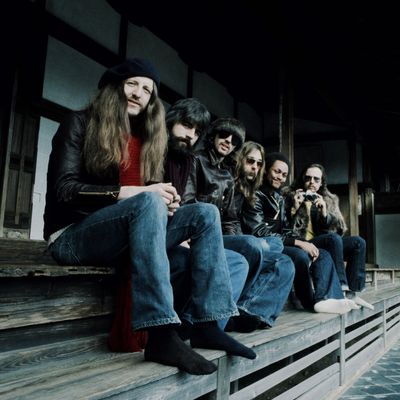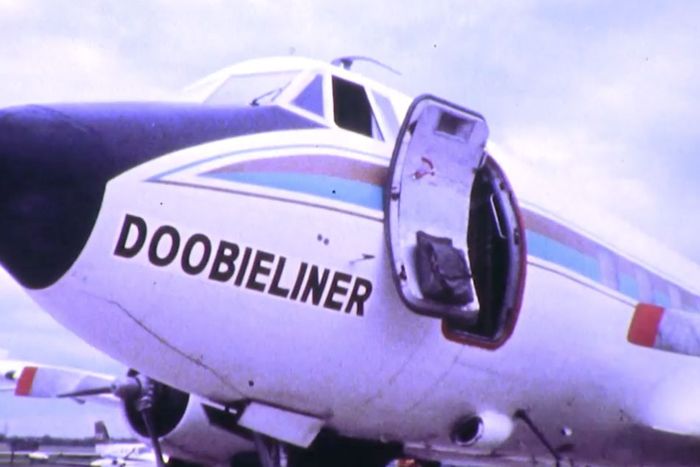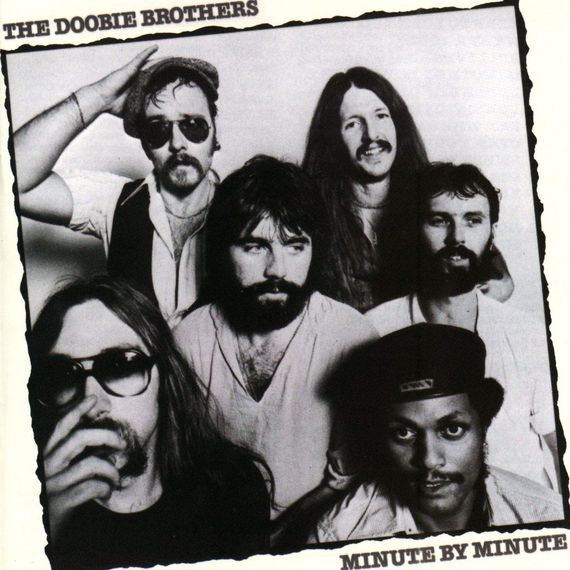
Oh captain, my captain. The Michael McDonald era of the Doobie Brothers can best be summed up in a few breezy categories: technical excellence, distinctively soulful harmonies, and damn good hair. McDonald, who joined the Doobies as a singer, songwriter, and keyboardist in 1975 to replace an ailing Tom Johnston, steered the band in a creative direction that was less Hells Angels and more Steely Dan, with albums Takin’ It to the Streets (1976), Livin’ on the Fault Line (1977), Minute by Minute (1978), and One Step Closer (1980) achieving new levels of commercial success, culminating in the band’s two Grammys for the crossover bop “What a Fool Believes.” Sure, the Doobies’ sound might be affectionately brushed off as yacht rock, but their yacht has a full bar and plenty of joints, and everyone is welcome to leave the dock and join in on the fun whenever they want.
Prior to the pandemic ruining everyone’s lives, 2020 was set to be a banner year for the Doobie Brothers. They reunited for a Las Vegas residency and nationwide tour to celebrate their 50th anniversary — which also doubled as McDonald’s first time performing with the band since the ’80s — only to have it canceled a few days into their February shows because of illness. Their long-overdue induction into the Rock and Roll Hall of Fame, too, was relegated to a short ceremony on HBO, leaving fans to imagine what might have been. (Filibuster-length acceptance speeches with an epic interlude of “Minute by Minute” and “Listen to the Music”?) McDonald, though, is cheerfully keeping busy amid our new normal. He was one of the first musicians to embrace a quarantine concert experience for fans, and he’ll be doing another one of these at-home livestreams later this month for his 69th birthday. In the meantime, McDonald set sail with our latest Superlatives.
Best Doobie Brothers song
That’s a hard one. Some of the songs that I really enjoy playing the most weren’t necessarily “my” songs. I always enjoyed doing “Long Train Runnin’.” It was the highlight of every show. We took turns singing it when Tom wasn’t performing with us. It’s the moment when the audience would come to life. “Taking It to the Streets” is my other pick because that was the moment where I felt I was part of the band and contributed something that made me a real Brother.
Song you wished the Doobie Brothers never recorded
Not for reasons you might think, but one of the songs that I always had trouble with — and it’s not because I don’t like the song, but it’s a hard song to sing — is “Real Love.” It’s one of those tricky songs that felt so key-sensitive to me. The key that it feels the best in is a key that feels the worst for me to sing in as I get older. I’ll admit that I shy away from the song more than I should. Especially when it’s one of those nights where instead of getting better as the night goes on, I get worse. For that reason alone, that song has always been an Oh God, here it comes moment for me.
Most soulful song
I think “Here to Love You” fits that nicely. For a while, it was our opener. It seemed to have a certain … well, we enjoyed opening shows with the drummers and we would look for opportunities to do that as often as possible. “Jesus Is Just Alright” is another good example of that. “Here to Love You” is one of those songs where the drummers would start with the beats and we would all fall in. It had a certain kind of gospel feel that I always enjoyed doing with the Doobies. We were a rock band, but we snuck gospels into our music a lot during that course of time. It was one aspect of a band that had many facets.
Song that epitomizes yacht rock
There are a few. [Laughs] I would’ve never thought it would be a genre, for one thing. I’m kind of stuck on that. I don’t know if one song most clearly defines that aspect of what we did as a band back then. What always hits me about yacht rock is it reminds me … I’ve often thought about how, during that time, we were all trying to bring something harmonically different to our music. There are different periods of pop music and rock music where everybody is trying to do the same thing — trying to be part of a club. Or there are periods that counter that and everybody is actually trying to do something different. We came up in that [latter] period.
I’ll mention James Taylor, Little Feat, Bonnie Raitt, and Randy Newman, who had something that was totally unique to them. When you heard them, you knew exactly who it was. I’m grateful for that. I don’t know that any of us necessarily thought about it much at the time, but back then, if you had a voice that sounded like Stevie Wonder’s, you probably wouldn’t get signed because an A&R guy would be like, Well, we already got a Stevie Wonder. We don’t need another. That mentality has changed over the years, so the genre has become more cohesive, in the sense that a lot of acts do a lot of the same thing. I’m not saying that in a critical sense.
The Doobies were in one of those periods where we would sit around and think about how many chords we could put in a song or how many times we could change keys in a song. The backlash to that was, Oh, that’s all yacht rock stuff, we want a purist rock-and-roll song with two or three chords, get back to the roots of rock and roll. I’ve often thought about how we would sound so alien to what was on the radio at the time. It’s funny how yacht rock has become almost popular again when at first it was discouraged. I have a good sense of humor about it.
Favorite Tom Johnston-on-vocals song
“Long Train Runnin’” is one of my favorite records, and it’s such a fun song to perform. It never sounded better than when Tom sang it. “Dark Eyed Cajun Woman” is another one of my favorite songs by him. The early stuff that Tom and Patrick [Simmons] wrote was largely the body of work that made the Doobies. I’m proud to be a part of the band at all, but their songs in particular have held up. They transcended all the stylistic changes and flavors that radio chose to embrace over the years.
Doobie Brothers song that sounds the most like Steely Dan
I’ve never thought about that before. Probably “Minute by Minute.” That song reminds me, in hindsight, of Pretzel Logic. They were all blues songs with more sophisticated harmonics than what you typically get with the blues. They went into areas where a real blues purist would be like, That ain’t the blues. You can’t play a major seventh chord when you’re playing the blues. Which is not true, by the way. [Laughs] You’ll get those people that will insist anyway. I think all genres of music deserve experimentation and deserve to be approached in different ways. That’s what moves popular music along as an art form. Where Pretzel Logic had those major suspensions in the chord progression disguised as minor blues chords, it came out as jazz. It created a whole different harmonic ambience to what was really just a blues song. “Minute by Minute” had the same idea in mind.
Song that best sets the mood for smoking a bunch of doobies
I’d have to go with “Black Water.” Just floating on a raft on a river hoping that you had some good bud to enjoy yourself with. Not that I do that anymore. I don’t. [Laughs] Back in the day, one [trash] bag of marijuana would probably go a long way on a trip like that.
Favorite harmonies to sing
I’ve always enjoyed singing “Minute by Minute” especially because of the harmonies. We wrote songs that would employ all of our vocal talents. We did it on so many songs, but “Minute by Minute” was the most fun to sing. And physically, it’s one of the easier ones. We’re not screaming at the top of our lungs or reaching for notes that we’re too old to sing any more.
Nerdiest song for keyboardists
I think “What a Fool Believes.” That was one of those songs that came at the peak of our harmonic experimentation with rock and blues. As a band, we had always been known for doing that. We were experimenting with chords, a lot of complex chord progressions, counter-rhythmic stuff, and key changes. We enjoyed doing that, and for a while, we even may have gotten a little bit carried away. [Laughs] It was always a fun challenge to look for ways to connect different parts of a song. I enjoyed modulations even though it’s a thing that, used wrongly, can really be terrible. It’s like tucking your napkin into your shirt at a fine restaurant. It shows more of what you don’t know than what you do know. So when we played around with modulations, we said we really wanted to do this, and asked what would be the best ways to do it. “What a Fool Believes” reflects that idea with my keyboard.
Fondest memory of the Doobieliner
There were so many wonderful aspects to the Doobieliner. We actually had a string of Doobieliners. We started off with a Convair model, and it was an older plane. We only got older planes that were refurbished, and this one was in the worst shape ever. It would shake in the air. We had great parties on that plane and lots of long poker games. It allowed us to get a night’s sleep, too, because it was easier to sleep in there than being on a bus. Something that I remember the most — and nobody really knows what happened that night — involved the first Doobieliner. It was a quirky plane with a lot of weird jerry-rigged parts. I remember coming out one morning to the airport, and it was a record-cold day. Well below zero degrees. As we pulled up to the plane, a bunch of guys were standing on the tail looking down. There was something weird, I couldn’t put my finger on it. And I realized there was no rudder on the tail. It was gone! It got so cold that night that the screws snapped and fell off onto the ground. Everybody was perplexed about this. Thankfully, it didn’t happen when we were taking off. The plane really was a death trap. It had outlived its life, but it was still in use.
Most meaningful compliment you’ve received as part of the Doobie Brothers
Edwin Starr came to see my band while we were in London and made sure to come backstage to mention he was a fan. That effort by Edwin meant so much to me, as he was one of the first Motown artists that I admired, particularly his 1966 single “Stop Her On Sight (S.O.S.).” That song was the foundation of my love for R&B music. So it was a great feeling.
Coolest cover pose
“Minute by Minute.” It’s a great photo. We had just walked offstage from a performance, and it’s very apparent because we’re all sweaty. [Laughs] I thought it was weird that they wanted to photograph us right then and there, and didn’t necessarily think it would turn out well, but I was wrong.







